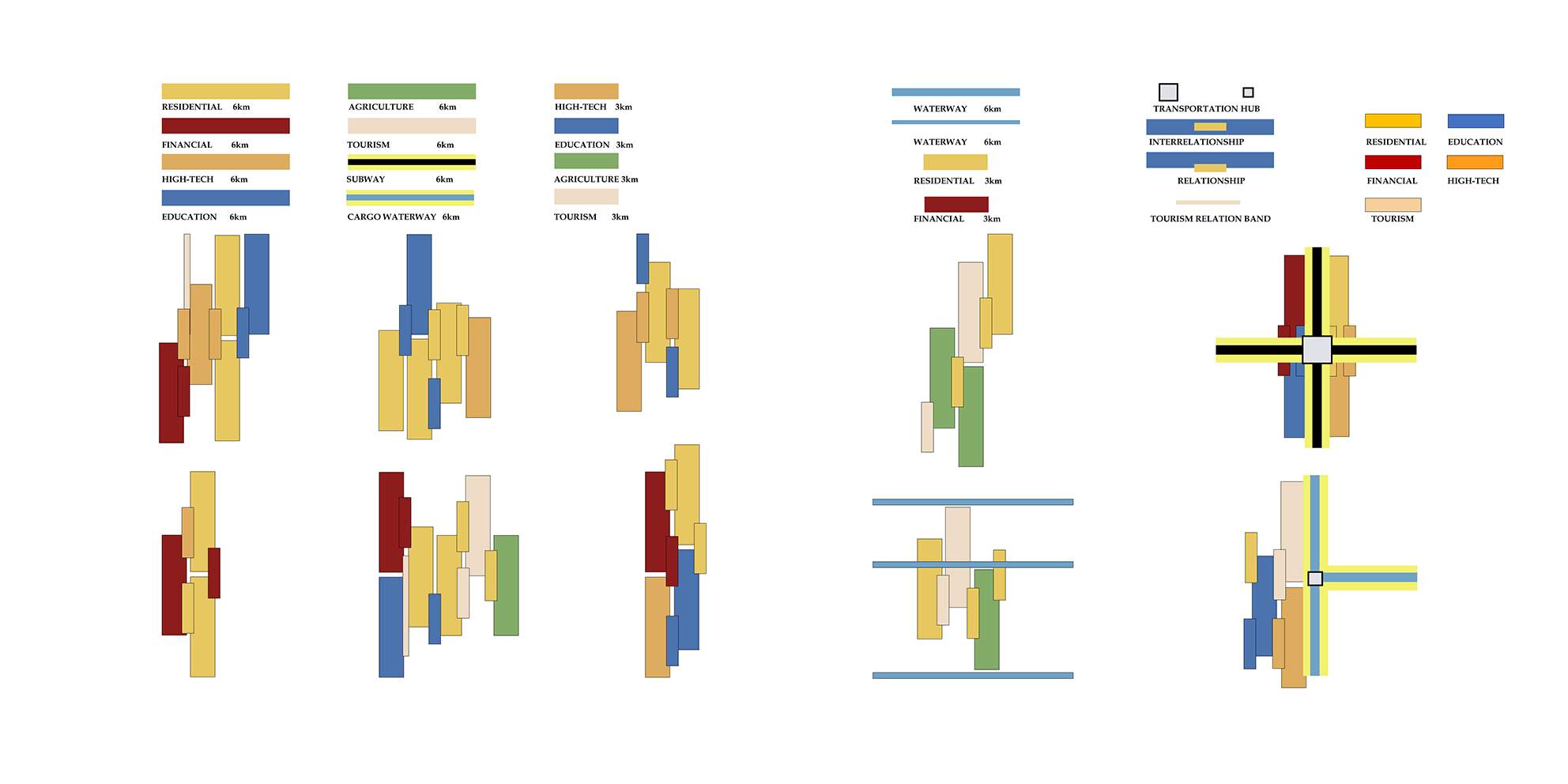LIU YAPENG ( OLLY )
WU YIRAN ( YIRAN )
LIU PENGNAN ( NINA )
The original strategy is divided into two phases. The first phase of urban development from 2021 to 2025 is mainly based on the development model of urban agglomerations, with different industrial transfers to strengthen the ties within and beyond the region, mainly focusing on education, industry, finance and tourism. There is a need to focus on education as an agenda in the GBA to meet existing work needs of the residents and to drive economic growth. the second phase focuses on forming a strong urban corridor. Here, all cities in the GBA are connected in order to provide for balanced development and to remove polluting industries by transforming them into high-tech industries. Furthermore, new energy industries are established in order to support clean energy production that drives the cities’ energy supply. The overall aim of the project is to achieve balanced development between various cities.
The first iteration
The heavy industries in the southern region of Foshan should be relocated to Jiangmen region, so as to reduce the polluting the tributaries of Foshan region, make room for the industrial upgrading of Foshan and promote economic development. At the same time, it will accelerate the transformation of local enterprises in Jiangmen, increase employment opportunities and promote the economic development of Jiangmen. Furthermore, the development of high-tech industries in the east of Zhongshan will be promoted through the development in Dongguan and Shenzhen, so as to promote the industrial transformation of Zhongshan. The migration of population from Shenzhen and Hong Kong promotes the development of education and tourism in Huizhou. This enables a strong interconnection between Guangzhou, Shenzhen, Macao and Hong Kong.
The second iteration
This phase focuses on the urban development of the GBA area in the next 50 years. The expansion of the GBA urban agglomeration is transformed into an urban corridor with strong connections among urban areas. The direction and location of the urban expansion follow the original urban expansion strategy along with the direction of the waterways. Furthermore, it strengthens the urban expansion between the borders, because this is conducive to strengthen links between cities.
The third interaction
This phase focuses on the urban development of the GBA area in the next 50 years. The expansion of the GBA urban agglomeration is transformed into an urban corridor with strong connections among urban areas. The direction and location of the urban expansion follow the original urban expansion strategy along with the direction of the waterways. Furthermore, it strengthens the urban expansion between the borders, because this is conducive to strengthen links between cities.
The forth interaction
The population of Guangzhou is expected to exceed 20 million in the next 10 years. Guangzhou is seen as a buffer city to reduce pressure. The strategy focuses on two main options, first, to use education and high-tech technology to attract talents to the central area. Second, the new financial center attracts young people to Foshan for the purpose of economic development. It is also seen that Dongguan in the west is polluted for a long time due to a large number of manufacturing industries. Therefore, the planning strategy for Dongguan and Huizhou focuses on agriculture and tourism so that some old people or retirees can move to the cities in the west.
It is clear that after the iterations there is a considerable difference between the original and future scenarios of the selected area that has transformed from a major agricultural area into a multi-functional island with a comprehensive transportation system. Second, it also represents the typical ‘strip’ urban developing form, which shows the interrelationship among different functional strips. Finally, because this area supports its own local culture, it is able to integrate the local identity within the new proposed strategy.

The overall vision focuses towards the appearance of bipolar cities. The east bank is dominated by high-rise buildings with high density whereas the West Bank cities mainly consist of ecological and low-density construction. Although the two sides of the strait are bipolar, they also influence and connect with each other. The potential and advantages of the two sides of the Taiwan Strait influence each other for the purpose of development. From the small core area of Nansha, there is a possibility of a future city that is based on a balanced development strategy.
© deltamegaregions.net